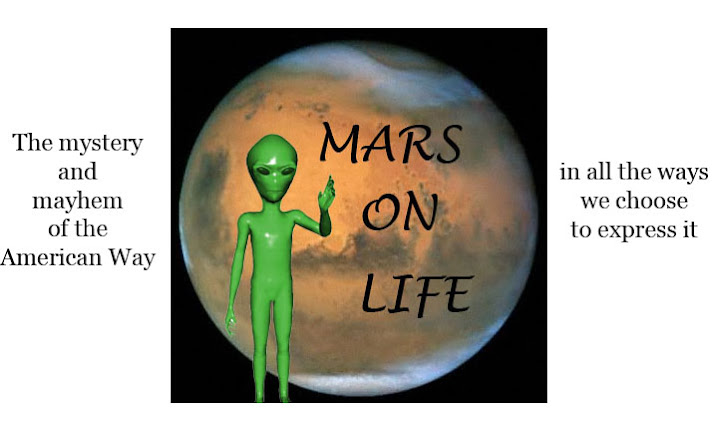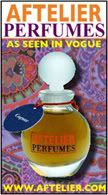It's all about the Japanese. The Japanese and Roseanne Barr. If you had any doubt as to the true definition of culture clash, pitting the people who were once Public Enemy #1 against our crassest televised comedienne should clear up any lingering confusion. On the surface, there's no commonality. There is no existing critical apparatus by which we can dissect an Asian culture and a crude comedienne vis-à-vis each other.
There is always an exception.
Both the Japanese and Roseanne Barr are shoppers. In the early nineties the value of dollar to yen was so outrageous that it honestly didn't pay to buy anything in Japan. Stories of twenty-dollar melons and sixty-dollar drugstore lipsticks were legendary. Japan had recovered from its reputation as a place of cheap dimestore tat and had become a technological powerhouse, but in so doing the cost of even the most banal items had become irrationally inflated.
The Japanese came to Los Angeles to buy. Los Angeles had only two competitors as a shopping mecca: San Francisco and Guam. San Francisco lacked a true boutique hub and Guam was nothing more than a rock in the Pacific that used to be an occupied territory and now had the Micronesia Mall.
American-style shopping was a tremendous lure for the Japanese, even though America itself wasn't internationally renowned for iconoclastic creativity. Our home turf was littered with fashion detritus like Earth Shoes and fads like pet rocks. The Japanese were light years away by comparison. Their number included designer Rei Kawabuko and Yoko Ono, an artist whose vocal stylings were the musical equivalent of Kawabuko's post-atomic bump collection. It also included the crazily inventive fashion subcultures that excelled in creatively repurposing children's cartoon figures into adult fashion trends.
The Japanese also loved a good bargain, and in the early nineties full American retail looked to them like a steal. Much as eBay has created a shopping outlet that partially succeeds on the premise of drastic discount, California at the end of the millennium was an Asian bargain hunter's paradise.
Los Angeles was not like San Francisco, where you could easily wander out of Union Square and into the disreputable Tenderloin. The tourist hotels near Market Street in San Francisco were dirty, overpriced, and dangerous. The weather could be abysmal. The best areas of Los Angeles were neatly demarcated by invisible fences. Rodeo Drive was one such enclosure.
Unlike the American who would travel abroad only to find disappointment in cultural diversity and the lack of retail homogeneity (a Starbucks on every corner), the Japanese tourist delighted in the difference. The Japanese knew how to have a good time, especially when their favorite logo merchandise was selling for what seemed to be rock-bottom prices.
If you were a merchant, the Japanese were the best customers in the world. It wasn't just the look of ecstasy on their faces or the clapping they would do when excitement overtook them. Nor was it that one didn't really have to employ any sneaky sales technique to capture their dollar.
The Japanese were grateful to buy your product.
The only caveat was that the product had to have some immediate cultural token. To quote an old Jerry Reed song, "When you're hot, you're hot; when you're not, you're not." How many retailers crashed and burned by not grasping that facile maxim? A line's popularity would probably last a single season at best, maybe six months more depending on what your competitors were hawking. The trick was to get your Japanese-language ads in JAL's inflight magazine, promising a "gifto" with purchase, and then sit back and wait for the tour busses. The gifto was the hook, and then all you had to do was to suggest a discount for a cash purchase and you were off and running.
You had to create a need. Give them something that they don't know they want. This is where so many retailers fail. The practice was post-war Japanese to begin with--the aforementioned Kawabuko collection springs to mind. The "gifto" could be anything--a coin purse, a key ring--but to the Japanese this signified a need that was going unfulfilled. It didn't hurt if the retailer had no outlet in Tokyo.
Thanks to the isolated, nearly covert positioning of the ads in the JAL magazine, other retailers never caught on. This is why one would see their upturned noses pressed hard against the glass of their boutique while the Hanako girls waltzed down Rodeo Drive carrying your shopping bags. Never mind that you were supposed to charge fifteen dollars for a box or fifty for a catalogue. In 1992 you were sales gods in your overpriced retail fiefdom.
It was a thing of mutually beneficial beauty. The Japanese saved millions of dollars and the sales clerks could afford to buy lunch.
Enjoy that tuna salad, for tomorrow you may die.
In the middle of what could only be termed a stupendous sales upswing, the company hired a new designer. In a fit of nepotistic hubris, they trusted next season's success to the daughter-in-law of the company's head honcho. This woman, who couldn't fold a Pampers, was suddenly cutting and draping. And making a whirlwind international tour to buy up and slice up the top-selling items from the world's most exclusive haute couture designers.
The idea was that she would directly imitate the clothing she had purchased, except that she would differentiate by color or by pattern. She would then sew up the clothing she had mutilated and wear it on her yacht.
Four months later, the merchandise was dropped onto the tarmac at LAX. Fedex trucks transported it to Rodeo Drive. The Los Angeles fashion pundits--the costume designers-- soon dropped by to see the collection.
How the company went from being a retail titan to a Rodeo Drive laughingstock is a cautionary tale for any designer. First, someone had decided that the Japanese would buy anything. This greatly underestimated and insulted the intellect of the very people who had made the business a success. That someone then followed this grave psychological miscalculation with a financial one: No longer would the product be made in the European ateliers. Instead, it would be outsourced to...
Taiwan.
The Japanese (and the Chinese, the Arabs, and everyone else with half a grain of taste) jumped ship when the company jumped the shark.
The error was not limited to provenance.
The collection--to use the term loosely--had as its centerpiece a pantsuit that was available in a choice of two colors: bright red or bright orange. Bright red and bright orange hadn't been popular since Nancy Reagan had a style showdown with Raisa Gorbachev seven years earlier. To compound the problem, the suits were striped. Stripes thick as jail bars ran the vertical length of the garments.
The suits were priced at two thousand dollars apiece.
Within four weeks, the tu rnaround kid of Beverly Hills was as vacant as an abandoned Hollywood hotel. The wrecking ball waited in the wings. Within a year, the company would be out of business and the CEO would be in prison for an unrelated matter.
rnaround kid of Beverly Hills was as vacant as an abandoned Hollywood hotel. The wrecking ball waited in the wings. Within a year, the company would be out of business and the CEO would be in prison for an unrelated matter.
And then Roseanne rang the bell. Roseanne, you might be surprised to learn, had fine taste in apparel. Despite what you might have seen on TV or on a ball field, Roseanne is a construct, a figment of Roseanne's imagination. It's an act. The woman had a keen eye for designer duds. It was Roseanne who pointed out that the "collection" was an analogue, the surimi of haute couture. Like I said, a keen eye.
The clothing wouldn't have fit Roseanne anyway. It didn't fit anyone in the store save for a tiny girl named Yu-Yu, who asked to borrow it for Halloween.
In an attempt to capitalize on the Japanese market, the clothing had been built on a model who weighed no more than 75 pounds and stood four feet, eight inches tall. Just like the the former customers, who could now be seen clapping and singing at Yves St. Laurent.
And that's the story. Another Hollywood tragedy. They happen. They happen as often as the Claymation sun rises in the sky and the Santa Ana winds blow fire on the mountains.
But this is Hollywood, and we love a good tearjerker. Almost as much as we love a comeback.
Thursday, January 17, 2008
Rodeo Rodeo: Beverly Hills, 1992
Subscribe to:
Post Comments (Atom)









4 comments:
I find your blog very interesting in it's perspective to different things. Keep it up! I will definetily be checking in the future.
-La Primavera, now found at www.fanatiquefashion.com
You know what else was in '92 MELROSE! lol. Sorry, Icouldn't help myself.
I wonder what this store was....though I do hope companies don't replicate this in the BRIC countries when they enter those markets.
BFH, this company is now defunct. Fashion was not their specialization. And they were already in BRIC countries before this acronymic designation existed, so they had their shot.
Post a Comment